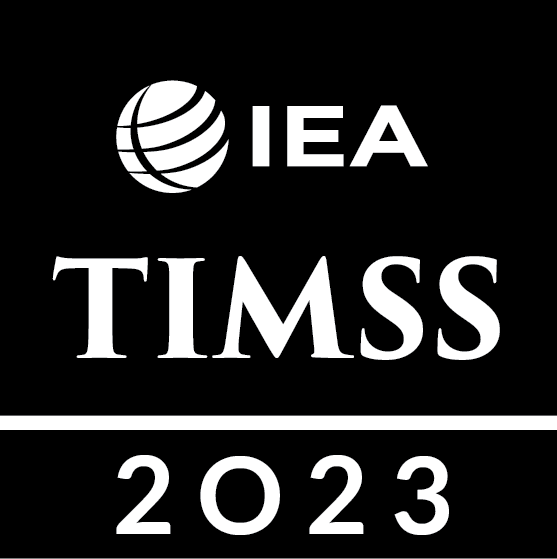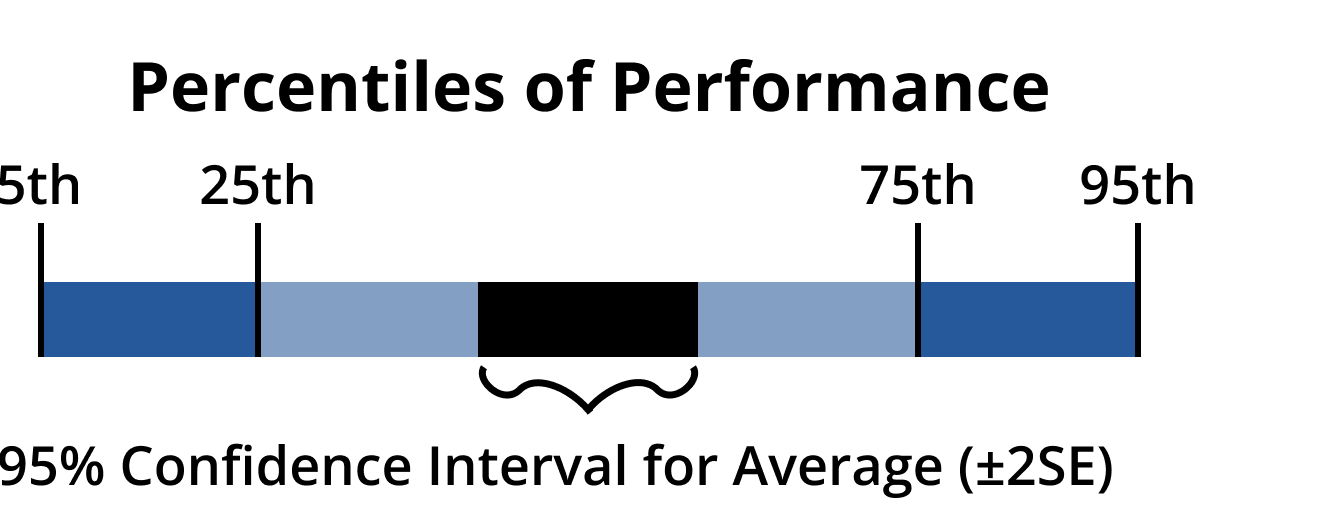Average Mathematics Achievement and Scale Score Distributions
The TIMSS 2023 eighth-grade mathematics assessment was delivered fully digitally and was based on a comprehensive assessment framework developed collaboratively with the participating countries to reflect their curricular goals. The eighth-grade mathematics assessment included four content areas—number (30%), algebra (30%), geometry and measurement (20%), and data and probability (20%). The framework prescribed that the mathematics items assessed eighth-grade students in the three cognitive domains knowing (35%), applying (40%), and reasoning (25%). To cover the framework at the eighth grade, the assessment comprised 204 items distributed across 14 item blocks with an average of 14-15 items per block.
The 2023 cycle marked the full transition to a computer-based assessment system, incorporating an adaptive booklet rotation to balance the proportion of more and less difficult booklets for countries with very high or very low expected average achievement. The 2023 assessment was carefully designed using a balanced incomplete block design, adhering to industry standards, and analyzed with state-of-the-art psychometric models. Consequently, the TIMSS 2023 mathematics achievement results for all 44 countries and 3 benchmarking participants are reported on the same TIMSS eighth-grade mathematics scale. The TIMSS eighth-grade mathematics achievement scale was established in TIMSS 1995, based on the combined distribution of achievement data across all participating countries, treating each country equally. A centerpoint of 500 was set in 1995 to correspond to the mean of overall achievement, with 100 points set to correspond to the standard deviation. Students’ achievement is placed on the scale with each subsequent TIMSS cycle, most recently for TIMSS 2023.
Exhibit 1.2.1 reports the average mathematics achievement estimates at the eighth grade for each of the 44 TIMSS 2023 participating countries and 3 benchmarking entities. The exhibit also presents the corresponding confidence intervals, and standard deviations for each country, together with the associated standard errors for these estimates (given in parentheses). Additionally, it includes a visualization of the score distribution, illustrating percentiles of the distribution and the confidence interval of the average achievement. The exhibit includes an international average estimate of the mean and confidence interval based on the 42 countries that participated in TIMSS 2023 with comparable data, with each country contributing equally. The standard error of this estimate reflects the estimated variance of the international average based on these countries. New Zealand and Côte d’Ivoire are reported at the bottom of the table below a line and do not contribute to the international average in eighth-grade achievement exhibits. New Zealand did not meet minimum standards for school participation rates and Côte d’Ivoire’s achievement could not be reliably estimated.
The exhibit is interactive and can be sorted by different criteria, with average achievement used as the default. Sorted by average achievement, the exhibit shows that the countries with the highest estimated average achievement are Singapore, Chinese Taipei, Korea, and Japan. These countries showed notably high average achievement. For example, Korea has an estimated average achievement of 596 and a 95% confidence interval ranging from 590 to 602. The confidence interval provides a score range around the estimated mean that illustrates the uncertainty in this estimate, which is based on a sample of students in a selection or subset of classrooms within a sample of schools in each country. Intervals constructed in this way around an estimate of the mean have a 95% chance of including the actual average of the country’s achievement.
There is considerable variability in achievement not only across the participants, but also within each country, as indicated by the standard deviation, the interquartile range, and the difference between the 10th and 90th percentiles of the achievement distribution shown in the table. Therefore, it would be incorrect to assume that (all) students in any country achieve higher scores than students in another country. While the average achievement of one country may be higher than the average achievement in another country, each country has some lower-achieving students and some higher-achieving students.
While examining the average achievement across countries can provide an overall initial impression of achievement in participating countries, the data collected by TIMSS 2023 and reported here is more comprehensive. TIMSS also provides information about the range of achievement observed in each country, and in later sections, about associations with contextual factors, which provides a deeper understanding of student performance relative to student background.

